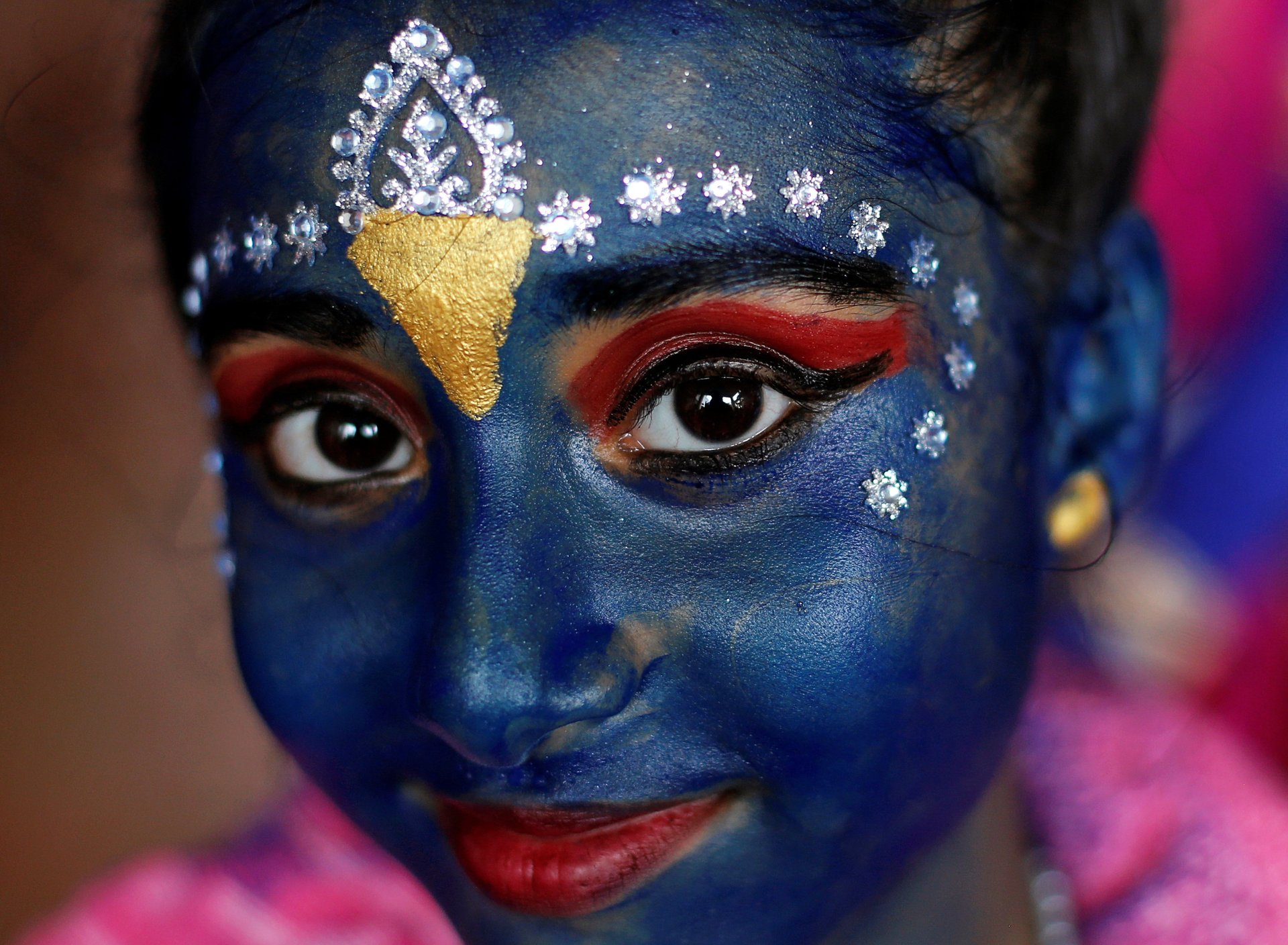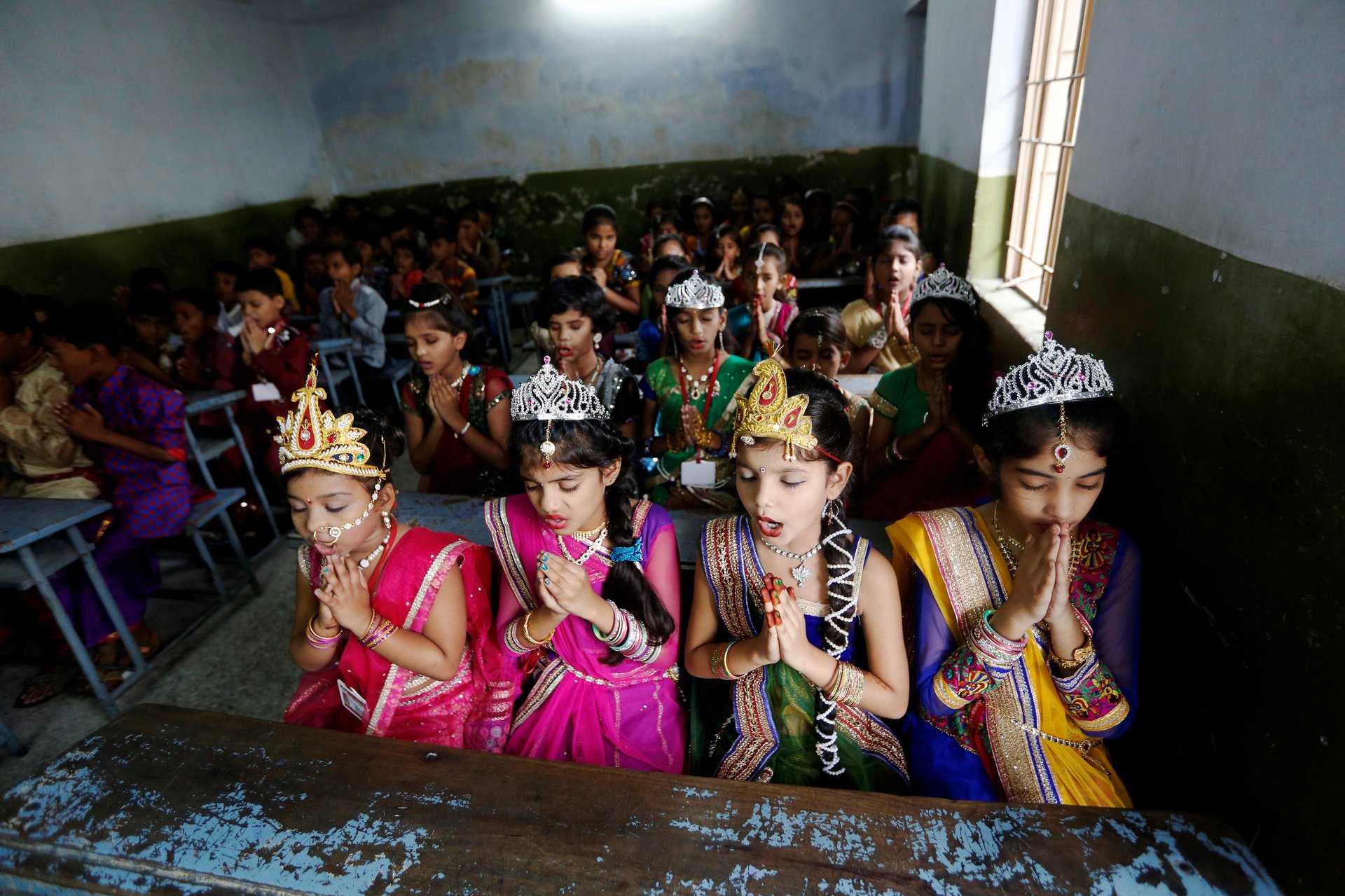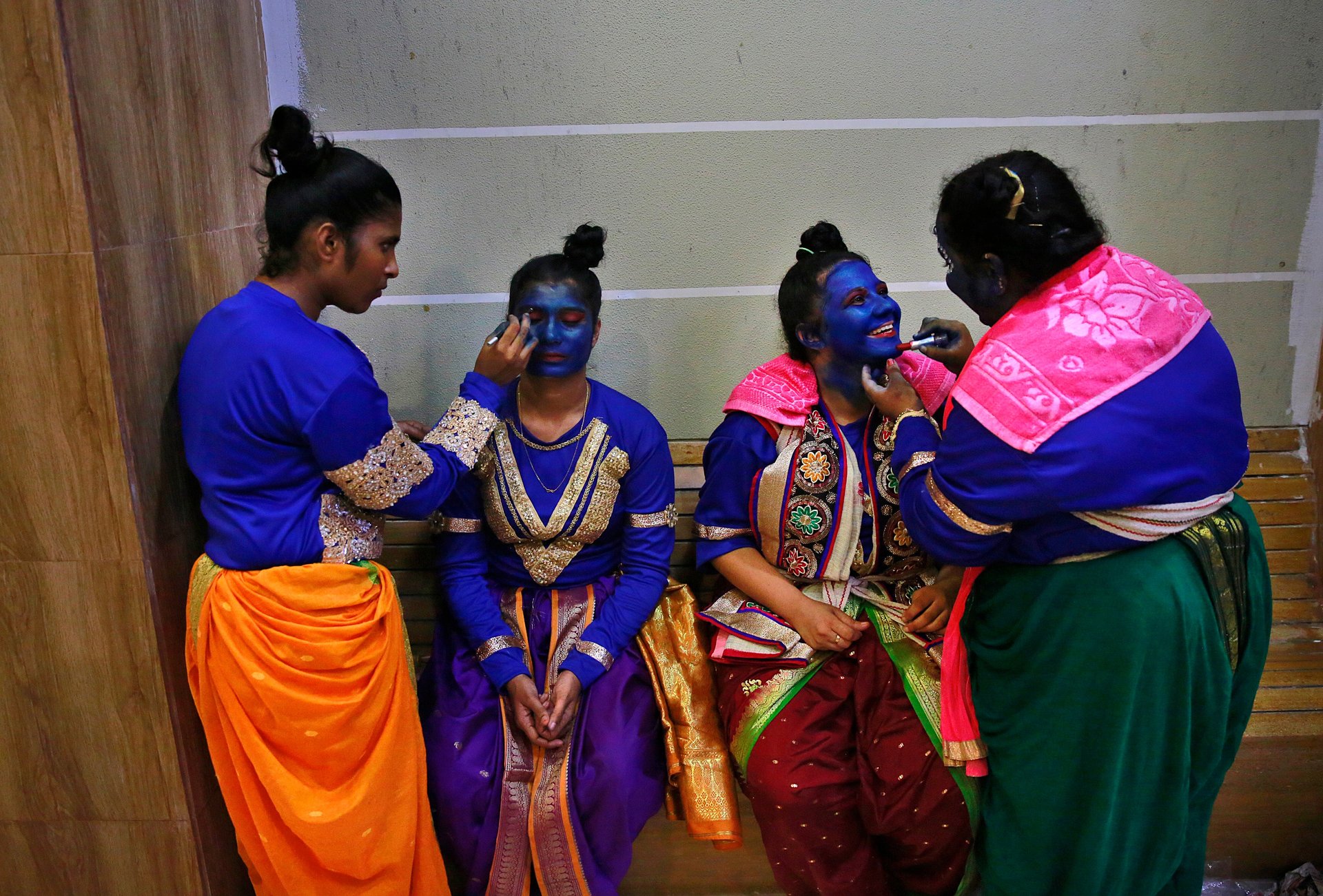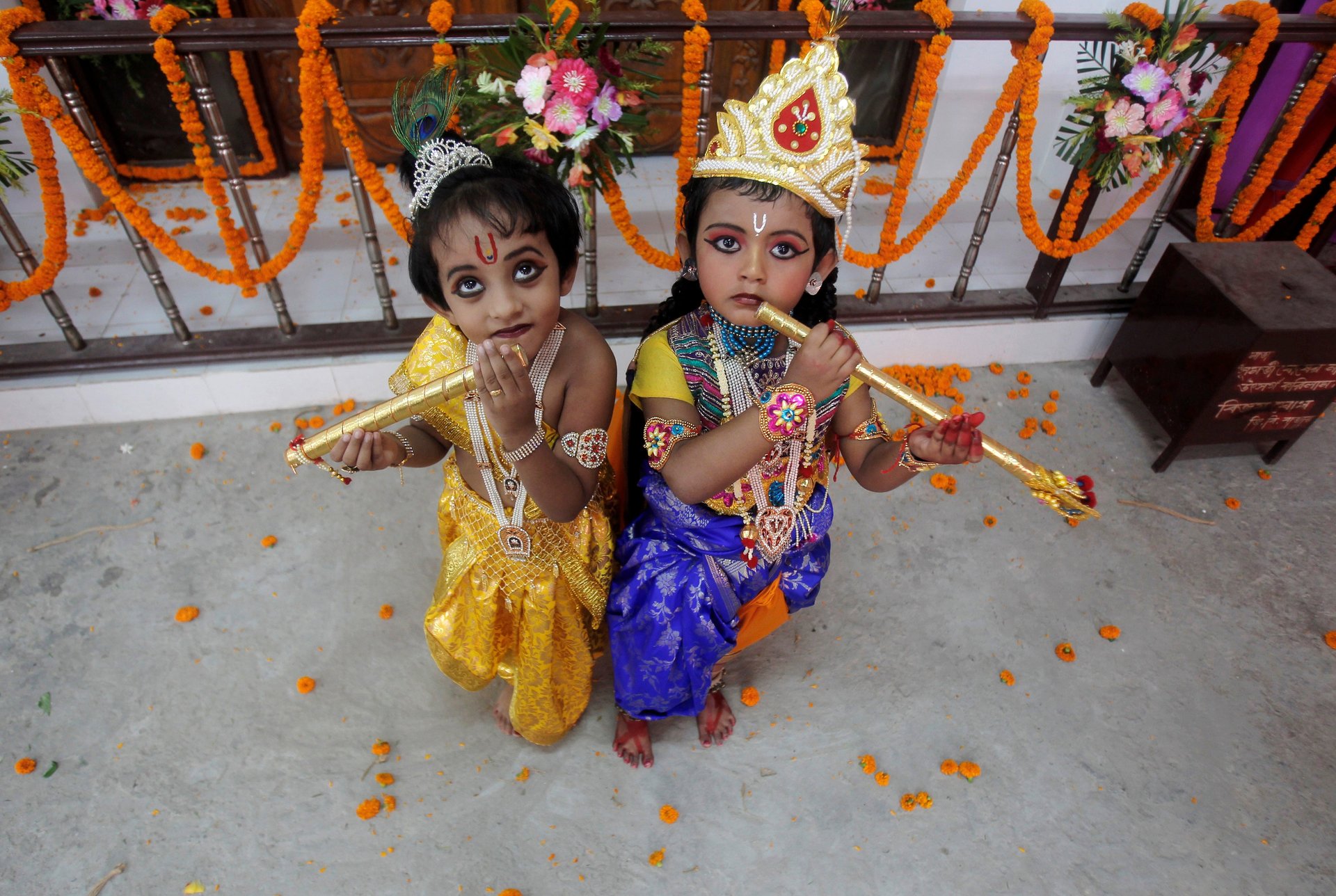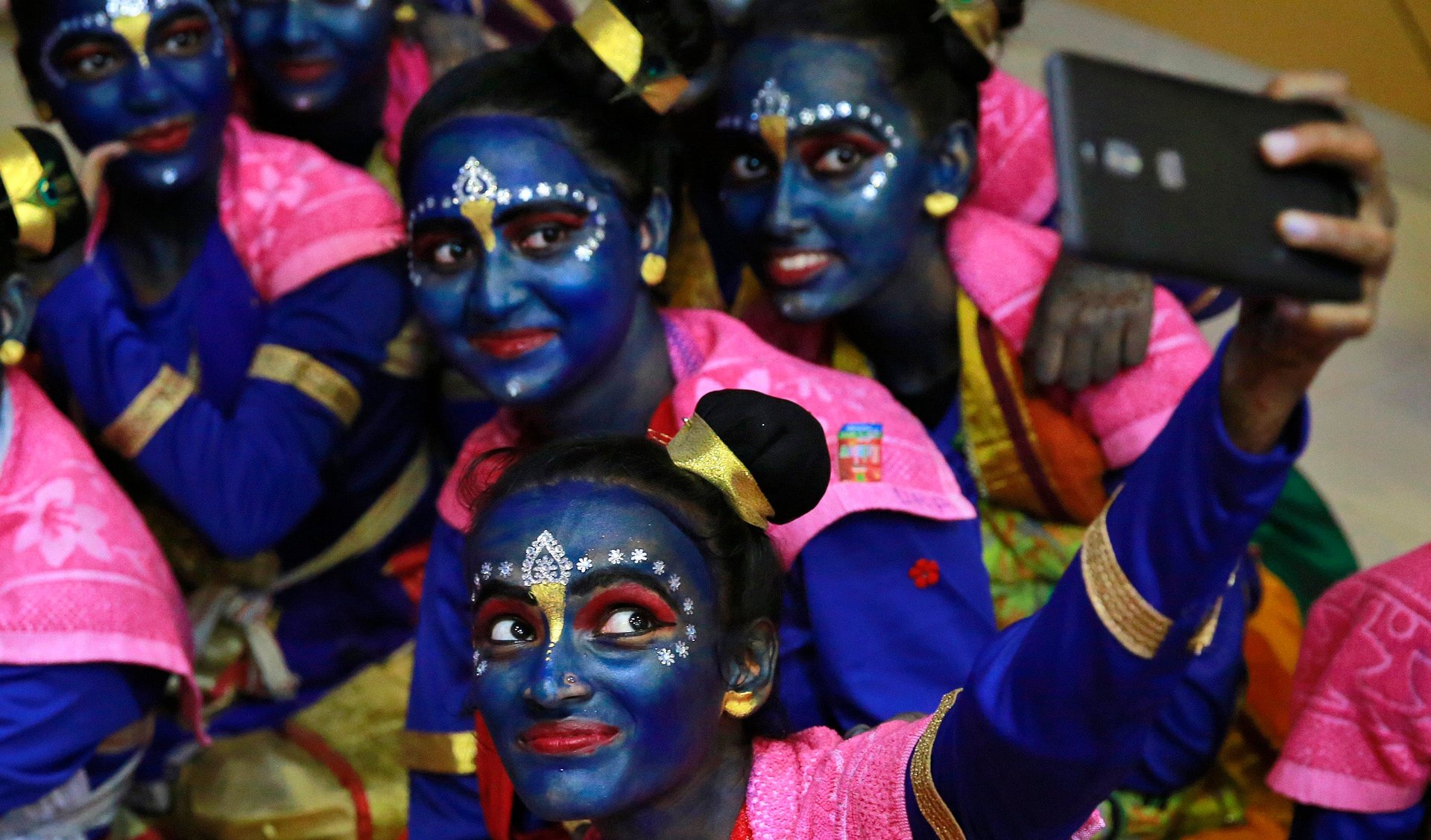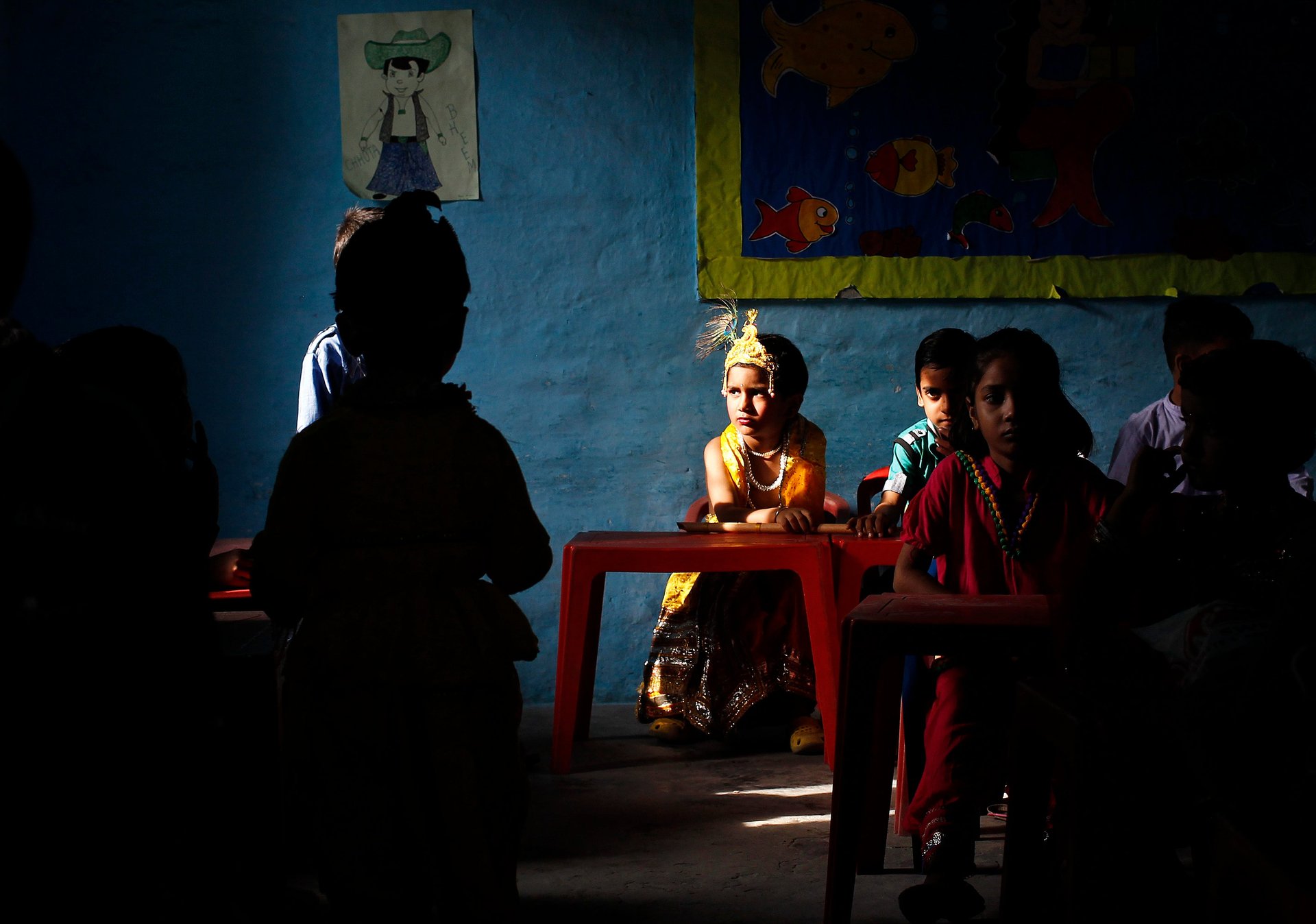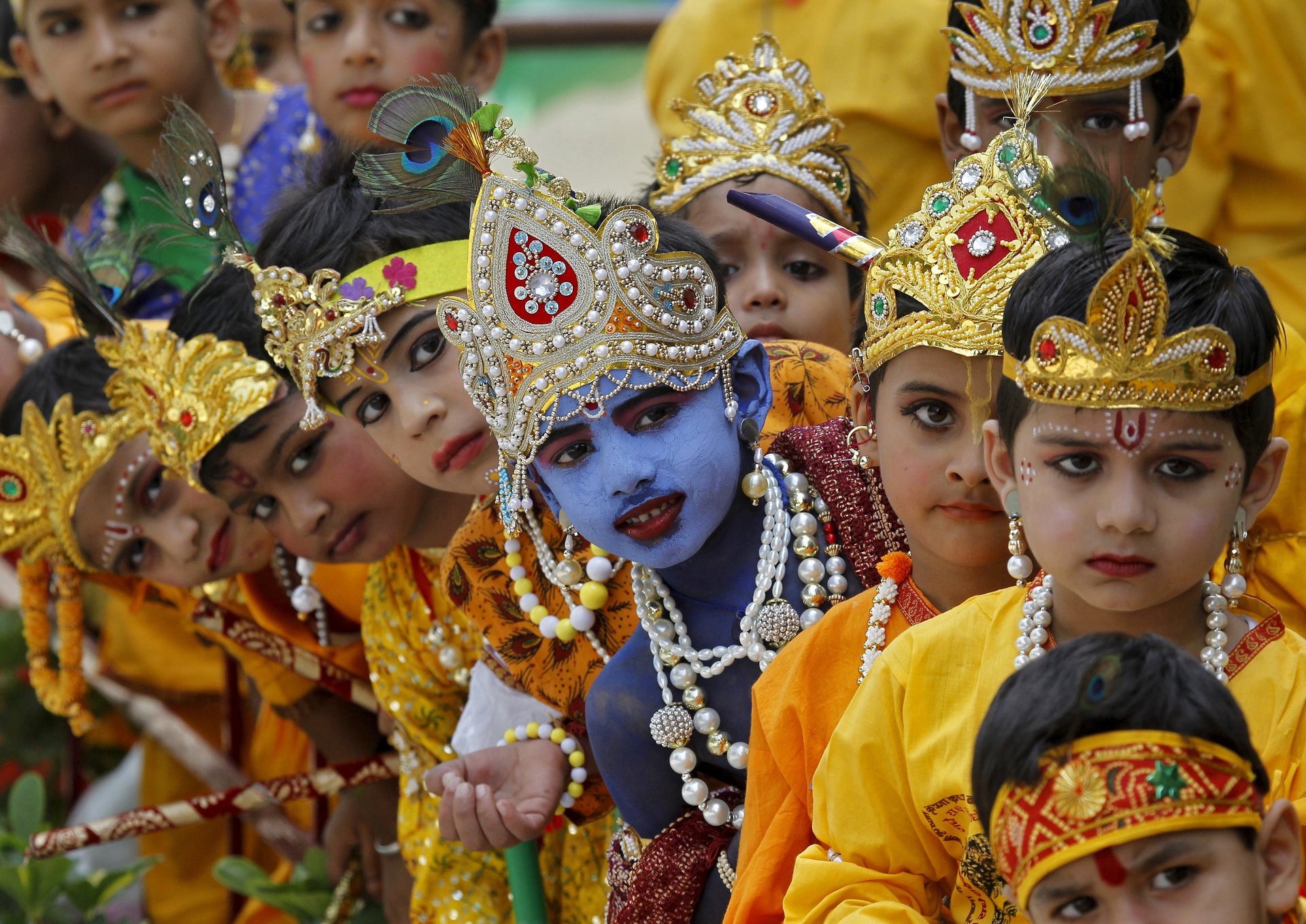Happy birthday Krishna, the sensual, free-willed god
The master prankster is waltzing his way across bylanes and households in India today (Aug. 25).
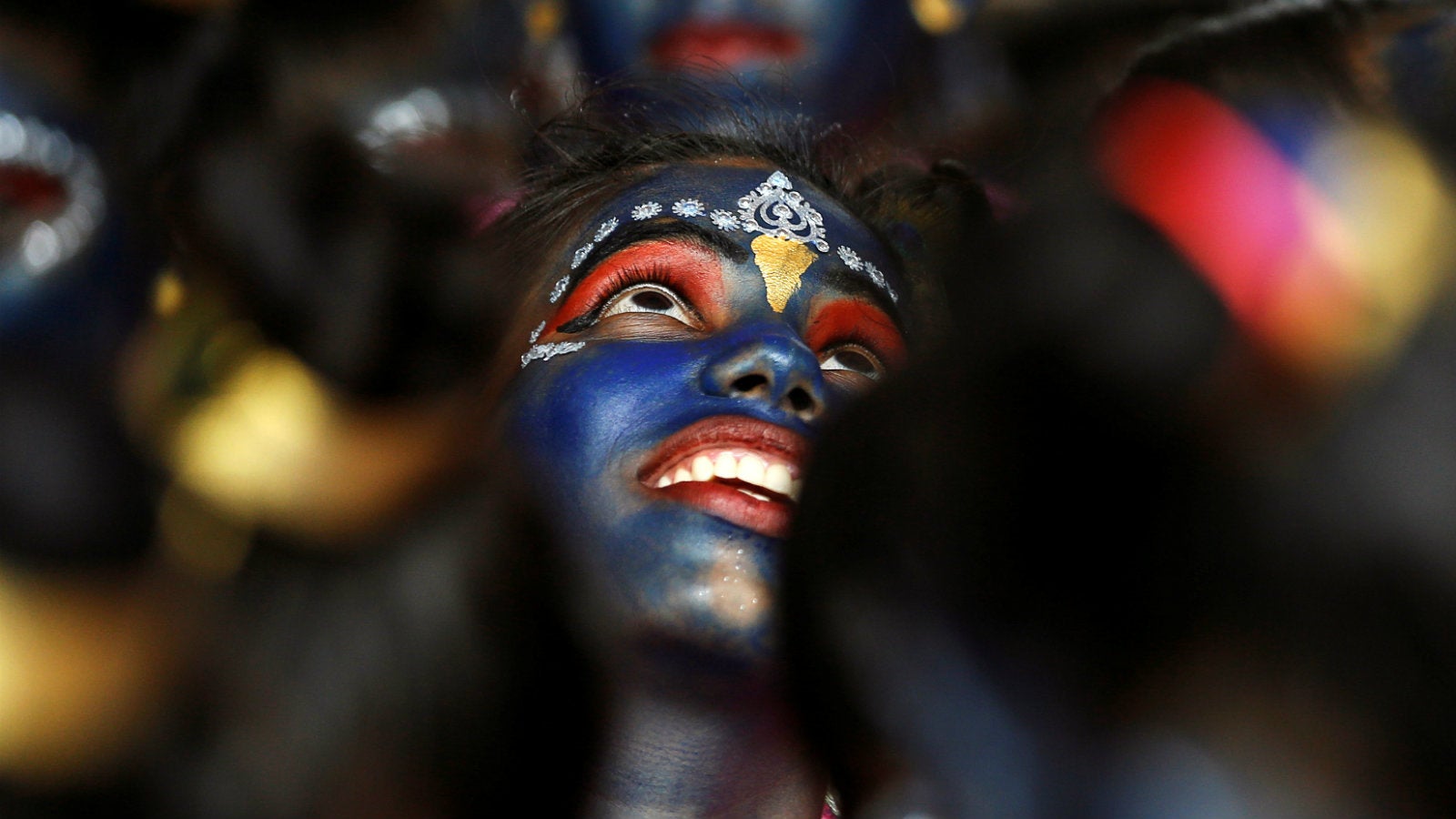

The master prankster is waltzing his way across bylanes and households in India today (Aug. 25).
Marking the beginning of the country’s biggest festival season, millions of Hindu households and hundreds of neighbourhoods across the country are in a frenzy, celebrating the birthday of dark-skinned Krishna, the playful, sensuous, and perhaps, the most political of Hindu gods.
Many will stay abuzz until well past midnight, partaking in celebrations or just praying. Young men and children are usually dressed up as the lord himself—complete with flowing robes and bejewelled crowns pecked with peacock feathers. The lord’s favourite musical instrument, the flute, is always at hand.
Krishna is believed to have been born at around midnight during the eighth phase of the moon, known as ashtami tithi, in a prison cell in Mathura city in the northern state of Uttar Pradesh (UP). His birth anniversary is commonly called Janamashtmi.
Besides his skin colour, often likened to that of heavy nimbus, there are several traits that set Krishna apart from others in the Hindu pantheon. It could be his strong advocacy of free-will, romantic association with his multiple consorts, the shunning of anxiety over righteous violence, or simply his realpolitik.
One of the most enduring and endearing symbols of the idea of Krishna is raas leela, or the “dance of passion.”
Brought up among cowherds, Krishna would at times play the flute, mesmerising the belles of Vrindavan, another UP town. The charmed women would follow him into the forest, where they would dance in exhilaration.
“In the Raas Lila, Krishna plays the flute and the milkmaids dance around him. But the scene takes place at night, outside the village, in the forest. Forest evokes fear. Night evokes fear. The milkmaids are away from the security of the village and family, and yet they feel safe and secure. They sing and dance around Krishna, who is neither their brother nor son nor husband. Neither law nor custom binds them,” Indian mythologist Devdutt Pattanaik said. “There is no duty or responsibility that binds them around Krishna. They do so of their own free will.”
The celebration of Janmashtami often recreates the scenes from such lore, with the youth forming human pyramids to break earthen pots and men and women dancing to traditional folk music.
Here are some images of the preparations for Janmashtami:
